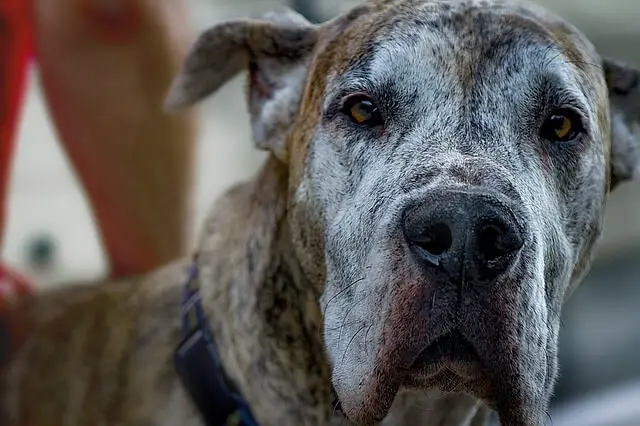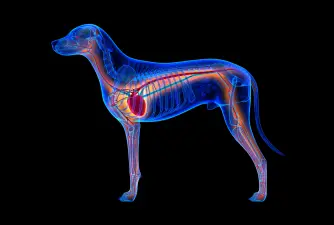Vestibular Disease in Dogs | What is It
05.12.2021.
If you notice your dog is having issues with their balance, it’s possible they have the vestibular disease. This condition can be pretty nerve-wracking to witness, especially since most of us don’t immediately know what’s wrong with our dog. It is completely natural to get extremely worried. However, you shouldn’t panic. Vestibular disease is not that dangerous. Here’s what you should know about it.
What is a vestibular disease in dogs?
Before we go into details about vestibular disease, we need to understand the vestibular system. The vestibular system is responsible for the dog’s balance. Its main component is located in the dog’s brain, and the peripheral system is located in the dog’s middle ear.
As you can imagine, the vestibular disease is a disease that affects the vestibular system. It refers to a sudden, non-progressive balance disturbance. This disease usually affects older dogs, and it is often called canine idiopathic vestibular syndrome.

How can I know my dog has the vestibular disease?
One of the biggest issues with the vestibular disease is that most dog owners haven’t heard about it. If the dog gets it, the owners will get worried, but in most cases, owners are not sure what’s wrong with their dogs. It would be best to learn about it and see which symptoms can occur. The best way to learn your dog has the vestibular disease is to get a definitive diagnosis from your vet.
Vestibular disease in dogs - symptoms
Like every other disease, the vestibular disease will cause specific symptoms in dogs. The good news is that symptoms look pretty scary, which means most dog owners take their dogs immediately to their vets. Here are the most common symptoms of the vestibular disease in dogs;
- Nausea
- Vomiting
- Staggering
- Stumbling
- Head tilts
- Incoordination
- Circling
- Wide stance with legs far apart
- Loss of appetite
- Loss of balance
- Sleeping on hard surfaces
- Rapid eye movement
What causes vestibular disease in dogs?
Like many other diseases in the canine world, vestibular disease can be caused by different reasons. Most cases are connected with the inner ear. Slight disturbances can affect the dog’s balance, and symptoms can rapidly appear. Some of the most common causes include;
- Hypothyroidism
- Trauma
- Cancer
- Injury
- Inner ear infections
- Medications toxic for inner ear
- Perforated eardrum

VET TIP: In some cases, the vestibular disease has no apparent cause. If that is the case with your dog, your vet will diagnose idiopathic vestibular disease. This form requires little to no veterinary intervention. Most symptoms will simply stop after 24-48 hours.
Is my dog at risk of the vestibular disease?
This disease is most common in older dogs. Most cases are connected with age, but vets draw some conclusions after many analyzed vestibular disease cases. This condition can affect all dog breeds, but it looks like German Shepherds and Dobermans seem to be particularly prone to it.
How is this disease diagnosed?
There are a couple of ways vets can diagnose this disease in dogs. The vestibular disease will cause specific symptoms, so the vet will ask you about them. It would be best to learn the symptoms and write down what you noticed about your dog. You can greatly help your vet by providing this information. It will point them in the right direction.
Other diseases can cause similar symptoms, so the vet will want to get a definitive diagnosis. They might order different tests, including blood tests, radiographs, blood pressure measurements, magnetic resonance imaging, computed tomography, BAER test, and symptom analysis. Your dog’s age will play a huge part in the vet’s diagnosis. Plus, the vet will ask if the symptoms were abrupt and sudden.

Treatment of vestibular disease in dogs
The exact treatment will be determined by the underlying cause. However, there are cases where an underlying cause cannot be identified. If that happens, the vet might choose not to do anything. It is entirely possible that the symptoms will simply stop.
However, most cases require some sort of veterinary intervention. If the dog shows severe symptoms of vestibular disease, the vet might recommend hospitalization. Your dog will stay in the hospital under close supervision. If the dog is severely ataxic, stumbling, and having trouble eating or drinking, the vet will introduce IV fluids for rehydration and sedatives to help the dog relax. In some cases, dogs are prescribed medications that help with nausea or vomiting.
Some dogs might need antibiotics if the vestibular disease is caused by bacterial infections. In that case, the vet will decide which specific antibiotic might be the best option and most effective. Vets used to treat vestibular disease with corticosteroids, but there is no significant evidence that confirms corticosteroids are effective.
What is the prognosis?
The exact prognosis will depend on underlying issues that cause the vestibular disease. If there are no severe underlying issues, the prognosis is excellent. Dogs will start getting a lot better within the first 72 hours. Most symptoms should be resolved entirely in 3 weeks.
World Dog Finder team







Share